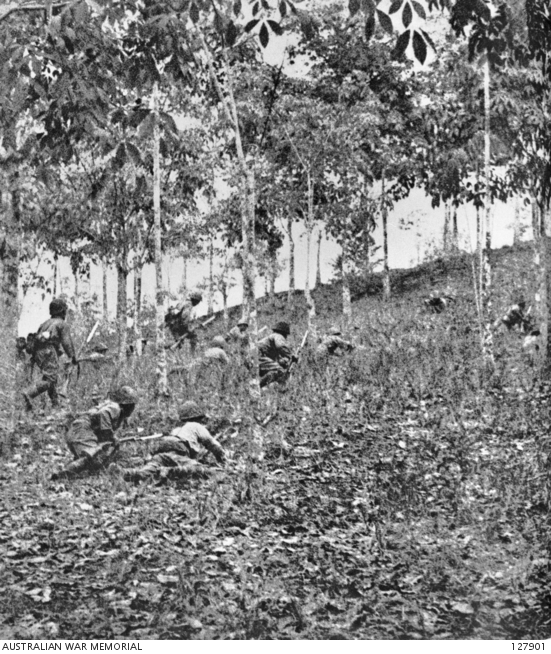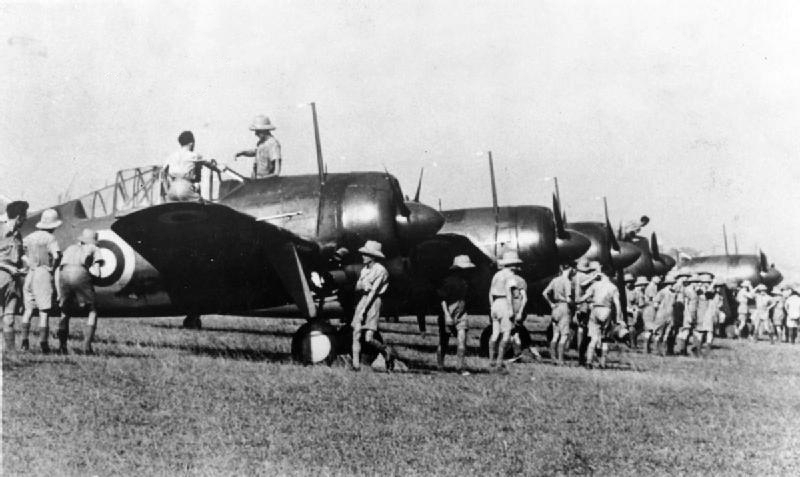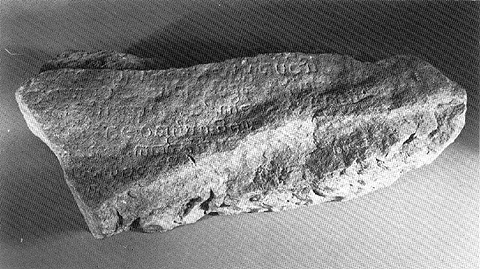|
Battle Of Bukit Timah
The Battle of Bukit Timah (10–12 February 1942), was part of the final stage of the Empire of Japan's invasion of Singapore during World War II. Battle On 8 February 1942, the Japanese landed a large force on the western side of Singapore Island. Throughout the following days, further troops were landed and heavy fighting followed as they pushed the mainly Australian defenders from the 22nd Brigade back from their positions on the coast. On 10 February further landings were made against the northern positions occupied by the 27th Brigade between the River Kranji and the Causeway, and steadily the British and Commonwealth lines were pushed back south-east towards the centre of the island. As the Japanese began advancing towards the strategically important Bukit Timah which offered vital supplies including water, British, Indian, and Australian troops from a variety of units fought actions along the Bukit Timah Road in an effort to blunt the advance. As the Japanese 5th Div ... [...More Info...] [...Related Items...] OR: [Wikipedia] [Google] [Baidu] |
Battle Of Singapore
The Fall of Singapore, also known as the Battle of Singapore,; ta, சிங்கப்பூரின் வீழ்ச்சி; ja, シンガポールの戦い took place in the South–East Asian theatre of the Pacific War. The Empire of Japan captured the British stronghold of Singapore, with fighting lasting from 8 to 15 February 1942. Singapore was the foremost British military base and economic port in South–East Asia and had been of great importance to British interwar defence strategy. The capture of Singapore resulted in the largest British surrender in its history. Prior to the battle, Japanese General Tomoyuki Yamashita had advanced with about 30,000 men down the Malayan Peninsula in the Malayan campaign. The British erroneously considered the jungle terrain impassable, leading to a swift Japanese advance as Allied defences were quickly outflanked. The British Lieutenant-General, Arthur Percival, commanded 85,000 Allied troops at Singapore, although many units ... [...More Info...] [...Related Items...] OR: [Wikipedia] [Google] [Baidu] |
World War II
World War II or the Second World War, often abbreviated as WWII or WW2, was a world war that lasted from 1939 to 1945. It involved the vast majority of the world's countries—including all of the great powers—forming two opposing military alliances: the Allies and the Axis powers. World War II was a total war that directly involved more than 100 million personnel from more than 30 countries. The major participants in the war threw their entire economic, industrial, and scientific capabilities behind the war effort, blurring the distinction between civilian and military resources. Aircraft played a major role in the conflict, enabling the strategic bombing of population centres and deploying the only two nuclear weapons ever used in war. World War II was by far the deadliest conflict in human history; it resulted in 70 to 85 million fatalities, mostly among civilians. Tens of millions died due to genocides (including the Holocaust), starvation, massa ... [...More Info...] [...Related Items...] OR: [Wikipedia] [Google] [Baidu] |
Battles Of World War II Involving The United Kingdom
A battle is an occurrence of combat in warfare between opposing military units of any number or size. A war usually consists of multiple battles. In general, a battle is a military engagement that is well defined in duration, area, and force commitment. An engagement with only limited commitment between the forces and without decisive results is sometimes called a skirmish. The word "battle" can also be used infrequently to refer to an entire operational campaign, although this usage greatly diverges from its conventional or customary meaning. Generally, the word "battle" is used for such campaigns if referring to a protracted combat encounter in which either one or both of the combatants had the same methods, resources, and strategic objectives throughout the encounter. Some prominent examples of this would be the Battle of the Atlantic, Battle of Britain, and Battle of Stalingrad, all in World War II. Wars and military campaigns are guided by military strategy, whereas ... [...More Info...] [...Related Items...] OR: [Wikipedia] [Google] [Baidu] |
Battles Of World War II Involving Japan
A battle is an occurrence of combat in warfare between opposing military units of any number or size. A war usually consists of multiple battles. In general, a battle is a military engagement that is well defined in duration, area, and force commitment. An engagement with only limited commitment between the forces and without decisive results is sometimes called a skirmish. The word "battle" can also be used infrequently to refer to an entire operational campaign, although this usage greatly diverges from its conventional or customary meaning. Generally, the word "battle" is used for such campaigns if referring to a protracted combat encounter in which either one or both of the combatants had the same methods, resources, and strategic objectives throughout the encounter. Some prominent examples of this would be the Battle of the Atlantic, Battle of Britain, and Battle of Stalingrad, all in World War II. Wars and military campaigns are guided by military strategy, whereas ... [...More Info...] [...Related Items...] OR: [Wikipedia] [Google] [Baidu] |
World War II Operations And Battles Of The Southeast Asia Theatre
In its most general sense, the term "world" refers to the totality of entities, to the whole of reality or to everything that is. The nature of the world has been conceptualized differently in different fields. Some conceptions see the world as unique while others talk of a "plurality of worlds". Some treat the world as one simple object while others analyze the world as a complex made up of many parts. In '' scientific cosmology'' the world or universe is commonly defined as " e totality of all space and time; all that is, has been, and will be". '' Theories of modality'', on the other hand, talk of possible worlds as complete and consistent ways how things could have been. ''Phenomenology'', starting from the horizon of co-given objects present in the periphery of every experience, defines the world as the biggest horizon or the "horizon of all horizons". In ''philosophy of mind'', the world is commonly contrasted with the mind as that which is represented by the mind. ''T ... [...More Info...] [...Related Items...] OR: [Wikipedia] [Google] [Baidu] |
Military History Of Singapore
Singapore has had an history of armed conflict and personnel dating to the colonial period. Colonial period The Singapore Volunteer Rifle Corps, a private organisation, was formed after the 1854 Hokkien-Teochew riots that occurred between the respective Chinese secret societies from 5 to 17 May that year. The conflict caused widespread unrest and loss of life on the island, and was severe enough for the police to require the support of the military, some marines, special constables, sepoys and even convicts to restore order. More than 500 people were killed and 300 houses burned down. Its numbers eventually dwindled to a small half-company, and the corps was disbanded in December 1887. In February 1888, the corps was revived as the Singapore Volunteer Artillery Corps (SVA). It was the first unit in the British Empire, regular or auxiliary, to field the Maxim Gun. The guns arrived in 1889 and were funded by donations from the Sultan of Johor, members of the various communities ... [...More Info...] [...Related Items...] OR: [Wikipedia] [Google] [Baidu] |
British Rule In Singapore
British may refer to: Peoples, culture, and language * British people, nationals or natives of the United Kingdom, British Overseas Territories, and Crown Dependencies. ** Britishness, the British identity and common culture * British English, the English language as spoken and written in the United Kingdom or, more broadly, throughout the British Isles * Celtic Britons, an ancient ethno-linguistic group * Brittonic languages, a branch of the Insular Celtic language family (formerly called British) ** Common Brittonic, an ancient language Other uses *''Brit(ish)'', a 2018 memoir by Afua Hirsch *People or things associated with: ** Great Britain, an island ** United Kingdom, a sovereign state ** Kingdom of Great Britain (1707–1800) ** United Kingdom of Great Britain and Ireland (1801–1922) See also * Terminology of the British Isles * Alternative names for the British * English (other) * Britannic (other) * British Isles * Brit (other) * Bri ... [...More Info...] [...Related Items...] OR: [Wikipedia] [Google] [Baidu] |
1942 In Singapore
, officially , was the name for Singapore when it was occupied and ruled by the Empire of Japan, following the fall and surrender of British military forces on 15 February 1942 during World War II. Japanese military forces occupied it after defeating the combined British, Indian, Australian, Malayan and the Straits Settlements garrison in the Battle of Singapore. The occupation was to become a major turning point in the histories of several nations, including those of Japan, Britain, and Singapore. Singapore was renamed Syonan-to, meaning "Light of the South Island" and was also included as part of the . Singapore was officially returned to British colonial rule on 12 September 1945, following the formal signing of the surrender instrument at the Municipal Building, currently known as the City Hall. After the return of the British, there were growing political sentiment amongst the local populace in tandem to the rise of anti-colonial and nationalist fervor, as many felt ... [...More Info...] [...Related Items...] OR: [Wikipedia] [Google] [Baidu] |
Conflicts In 1942
Conflict may refer to: Arts, entertainment, and media Films * ''Conflict'' (1921 film), an American silent film directed by Stuart Paton * ''Conflict'' (1936 film), an American boxing film starring John Wayne * ''Conflict'' (1937 film), a Swedish drama film directed by Per-Axel Branner * ''Conflict'' (1938 film), a French drama film directed by Léonide Moguy * ''Conflict'' (1945 film), an American suspense film starring Humphrey Bogart * ''Catholics: A Fable'' (1973 film), or ''The Conflict'', a film starring Martin Sheen * ''Judith'' (1966 film) or ''Conflict'', a film starring Sophia Loren * ''Samar'' (1999 film) or ''Conflict'', a 1999 Indian film by Shyam Benegal Games * ''Conflict'' (series), a 2002–2008 series of war games for the PS2, Xbox, and PC * ''Conflict'' (video game), a 1989 Nintendo Entertainment System war game * '' Conflict: Middle East Political Simulator'', a 1990 strategy computer game Literature and periodicals * ''Conflict'' (novel) ... [...More Info...] [...Related Items...] OR: [Wikipedia] [Google] [Baidu] |
Malaya Command
The Malaya Command was a formation of the British Army formed in the 1920s for the coordination of the defences of British Malaya, which comprised the Straits Settlements, the Federated Malay States and the Unfederated Malay States. It consisted mainly of small garrison forces in Kuala Lumpur, Penang, Taiping, Seremban and Singapore. With the outbreak of the Second World War in 1939, the command reinforced its strength in anticipation of an attack. With the bulk of British forces being tied down in Europe and North Africa, the command was mainly augmented by units from India. On 18 November 1940, the command was placed under the command of the British Far East Command and later, on 7 January 1942, under the short-lived South West Pacific Command or ABDACOM, which was tasked to maintain control of the "Malay Barrier" (or "East Indies Barrier"), a notional line running down the Malayan Peninsula, through Singapore and the southernmost islands of the Dutch East Indies. Th ... [...More Info...] [...Related Items...] OR: [Wikipedia] [Google] [Baidu] |
Japanese Order Of Battle During The Malayan Campaign
The Japanese Imperial Army landed the 25th Army under the command of General Tomoyuki Yamashita on the east coasts of Malaya and Thailand on the night of 7 December 1941. History The Japanese Imperial Army invaded Malaya and Thailand on 7 December 1941. The conquest of Malaya was completed in less than three months when Singapore surrendered on 15 February 1942. The Japanese Twenty-Fifth Army under General Tomoyuki Yamashita was given the task of conquering Malaya. Order of Battle Japanese 25th Army on 8 December 1941 *Commanding Officer – Lieutenant-General Tomoyuki Yamashita Imperial Guards Division *Lt-Gen Takuma Nishimura The Imperial Guards Division made its first appearance in the Malayan campaign during the Battle of Muar where it destroyed the 45th Indian Brigade and inflicted heavy casualties on the two supporting Australian infantry battalions. The Imperial Guards took part in the Battle of Singapore. *3rd Konoye Regt. *4th Konoye Regt. – Colonel Kentaro Kunishi ... [...More Info...] [...Related Items...] OR: [Wikipedia] [Google] [Baidu] |
History Of Singapore
The history of the modern state of Singapore dates back to its founding in the early nineteenth century; however, evidence suggests that a significant trading settlement existed on the Island of Singapore in the 14th century. The last ruler of the Kingdom of Singapura, Parameswara, was expelled by the Majapahit or the Siamese and he then founded Malacca. Singapore then came under the Malacca Sultanate and then the Johor Sultanate. In 1819, British statesman Stamford Raffles negotiated a treaty whereby Johor allowed the British to locate a trading port on the island, ultimately leading to the establishment of the crown colony of Singapore in 1867. Important reasons for the rise of Singapore were its nodal position at the tip of the Malay Peninsula flanked by the Pacific and Indian Oceans, the presence of a natural sheltered harbour, as well as its status as a free port. During World War II, Singapore was conquered and occupied by the Japanese Empire from 1942 to 1945. Whe ... [...More Info...] [...Related Items...] OR: [Wikipedia] [Google] [Baidu] |








